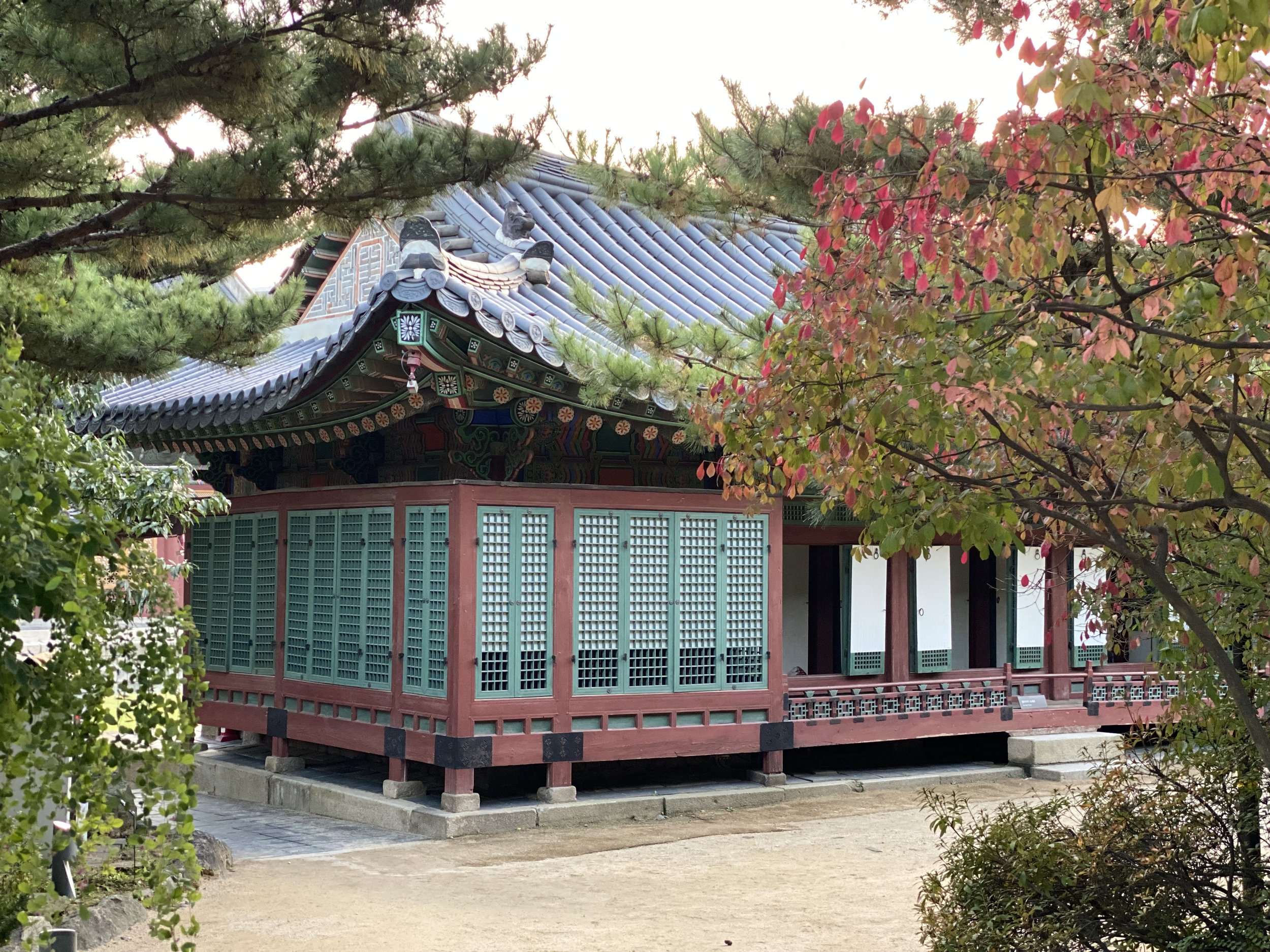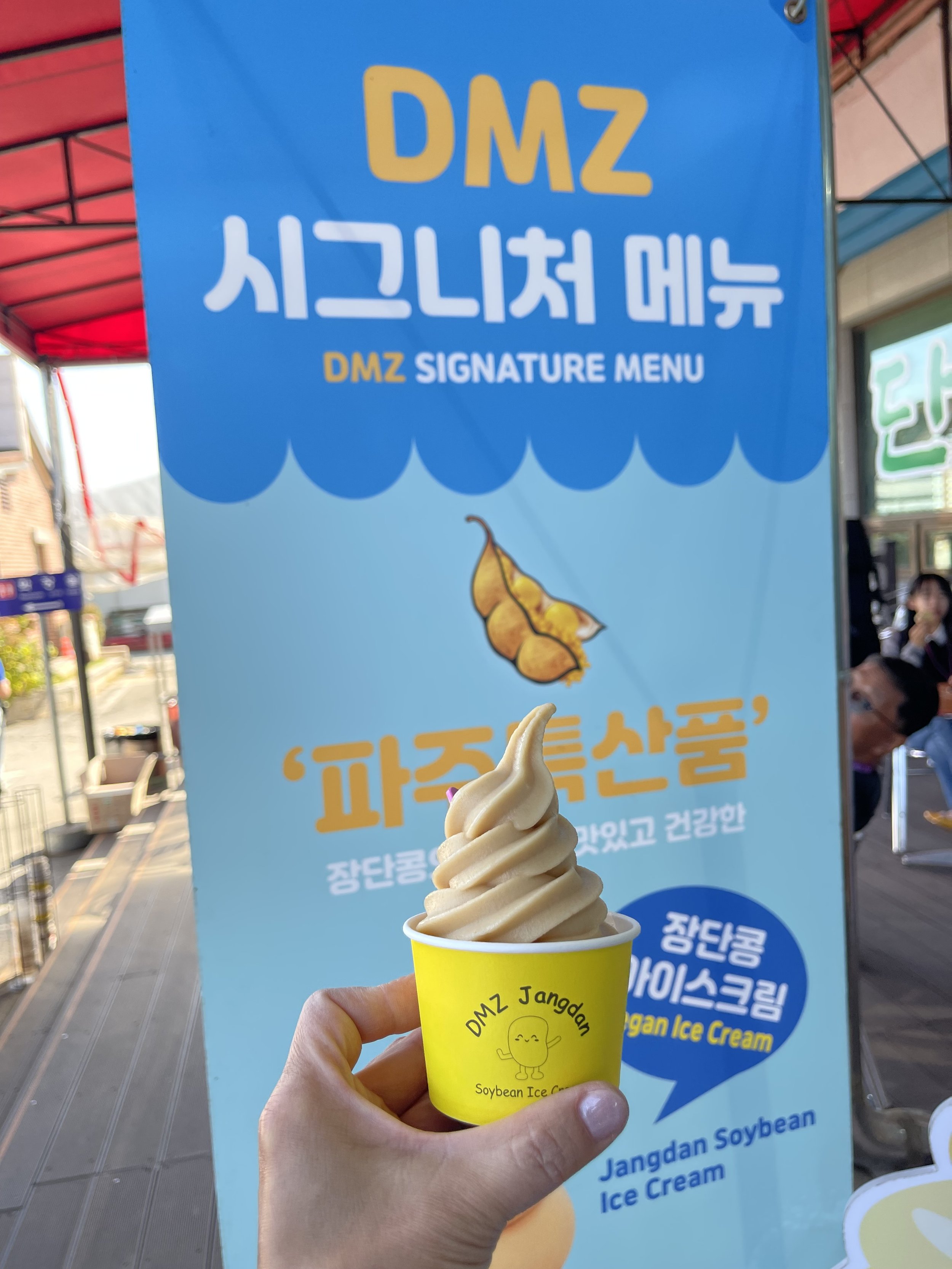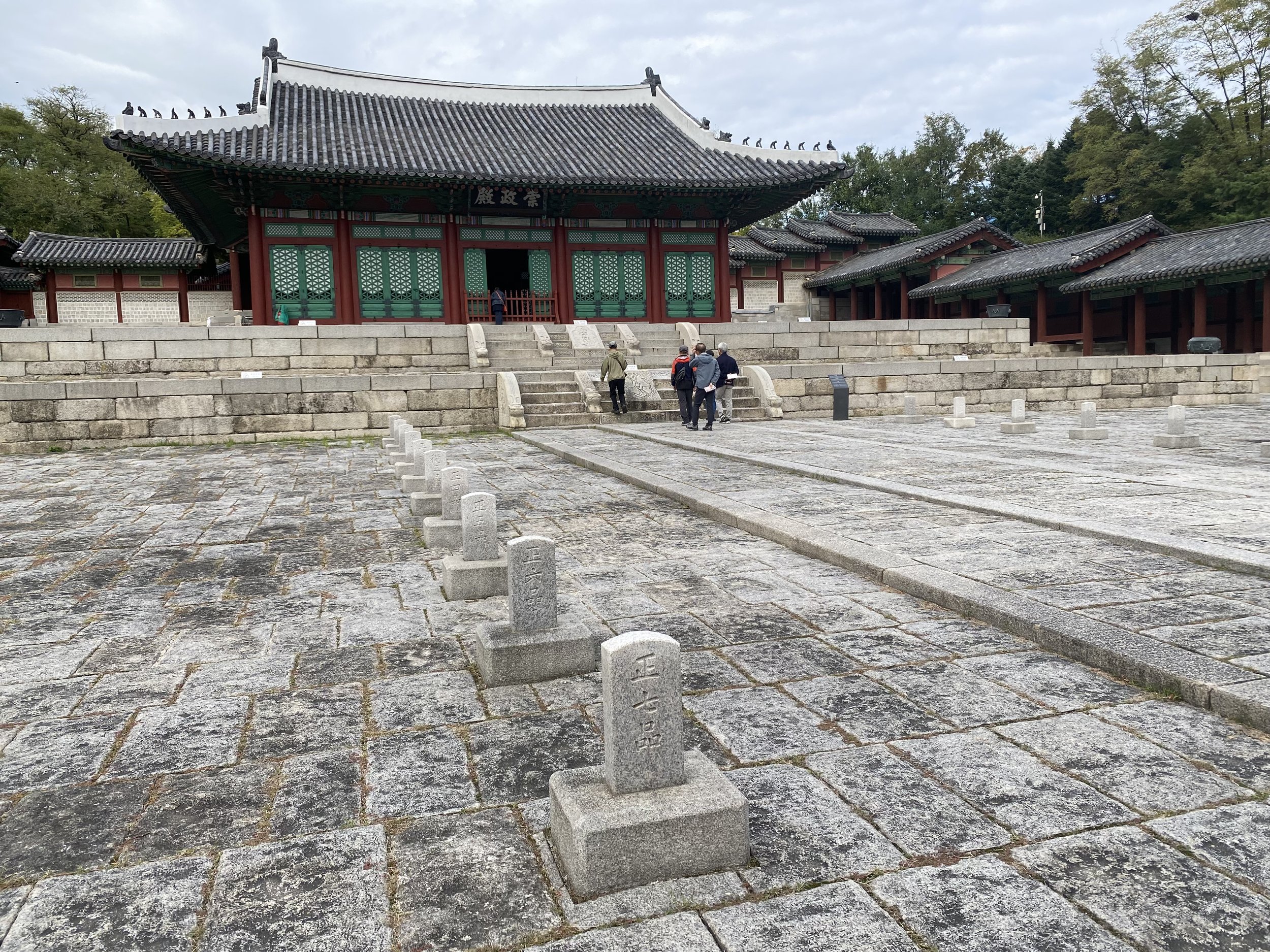Seoul, Korea (Part 2 of 3)
Royal Palaces, Museums and a Demilitarized Zone
Gyongbokgung Palace is the largest and most important ancient palace in Seoul. Geographically, it’s perfectly situated in the north-south axis — for good chi — with Sejong Avenue flowing from the palace’s main gates as the most prestigious address for Korea’s many corporate headquarters. Also knowing a bit about chi, the Japanese during its occupation of Korea built its colonial administrative building right in front of the palace to neutralize all that good energy, one of the first things remedied by Koreans after the end of Japanese occupation. Today Korea’s version of the White House — the Blue House — sits behind the palace grounds.
Today, the grounds were crowded and festive, with many foreigners dressed in traditional Korean hanboks (it didn’t hurt that those dressed in traditional garb got free entry into the palace). It was hard to focus on the audio guide descriptions of ancient history in the tourist melee — ourselves also guilty as charged — so we simply walked around the grounds, trying to absorb some of the serenity of the place.
***
Deoksugung Palace sits on Sejong Avenue, across the street from the Seoul City Hall, that infamous location for the many protests that keep the area gridlocked (the bane of taxi drivers’ existence, or so we were told several times). Deoksugung was a small gem of a palace, the grounds peaceful and pretty in the twilight.
And for the record: the word “Palace” in the English names of these palaces is redundant because in Korean, “Gung” means “Palace,” so “Gyeongbokgung Palace” literally translates to, “Gyeongbok Palace Palace.”
***
Today we got up at 5am to make it to the McDonald’s in Itaewon — a bit ironic — for a guided visit to the DMZ with North Korea.
After stops to pick up more tourists, we were soon on the highway north to the city of Paju. Taking advantage of the 45-minute ride, our guide shared bits of Korean history: the long history of a unified Korea, the context of the Cold War between the US and Soviet Union/China, the Korean War, the Kim dynasty now in its third generation. Our stops on the tour were:
— Imjingak Park and the Peace Gondola: the park contains relics of the war (a burned train and bridge from the era; a memorial for jesa, a ceremony to honor one’s ancestors, placed for those with relatives still in North Korea; war memorials for those who died in the Korean War and even a statue of Harry Truman in gratitude for US support during the war. The gondola took us across the Imjin River, to the site of the former American Camp Greaves, which was now a historical museum. There was also a park in which we could write friendship messages on ribbons and tie to a chainlink fence.
— The Third Tunnel, so named because it was the third enemy infiltration tunnel discovered by South Korea. But credit where credit is due: walking down the tunnel to its end point, it was impossible not to be impressed by the determination of the North. The whole tunnel area was hard rock, and it didn’t take much imagination to visualize the effort by North Korean workers to accomplish the feat, likely under duress (to N.’s distress, all cameras were required to be be placed in lockers before heading to the tunnel).
— Dora Observatory, which gave us views over the border to the town of Kaesong in North Korea. The observatory had been closed because of the recent “defection” of an American soldier recently returned to US custody and had only recently opened under the condition that no photography be allowed. The Joint Security Area (blue buildings where North and South Korean soldiers faced each other) remained closed.
We celebrated living on this side of the border by getting soybean ice cream (“DMZ Signature Menu” — Cousin Kim would be horrified) and, back in the city, dumplings and spicy naen myun noodles. For some reason, they tasted particularly good today.
***
We started late in the day, without any specific plans on this, our 34th wedding anniversary.
We found ourselves in the Gwanghamun area and, to our surprise, our celebratory day coincided with Church Day: thousands had gathered from all over the country for a special church service. From a stage set up in that good chi area, large screens amplified the hymns and sermons to city blocks far and wide. At one point, a woman mistook us for Seoulites and asked us for directions. The statue of General Lee Soon Shin watched over all.
To mark our special day, we stopped at one of those caricature booths to get our portraits done. The girl was young — but isn’t anyone compared to those celebrating a 34th anniversary — but had a keen eye; she noticed my uneven ears and N.’s trench coat.
***
We made a quick trip to Dongdaemun (East Main Gate) and to the old city walls. Among those who had the same idea was a funny guy with the kite who was not shy about approaching people and regaling them with his stories, and who claimed that the louder he screamed, the higher his kite would fly.
The other reason for a visit to the area was my desire to explore local Korean fashion in the nearby malls, but between malls that opened during the graveyard shift and those that sold cheap fast fashion, nothing seemed worth the effort.
***
The skies looked gray and rain was in the forecast — perfect for museum visits.
We stopped by the Seoul Museum of History — which should probably be named Seoul History Museum. It provided a chronological history of the development of Seoul, from its roots as the center of the ancient Korean empire, to its modern place as one of the most dynamic cities in Asia.
Next to the museum was the “Gyeonghui Palace Palace.”
***















































